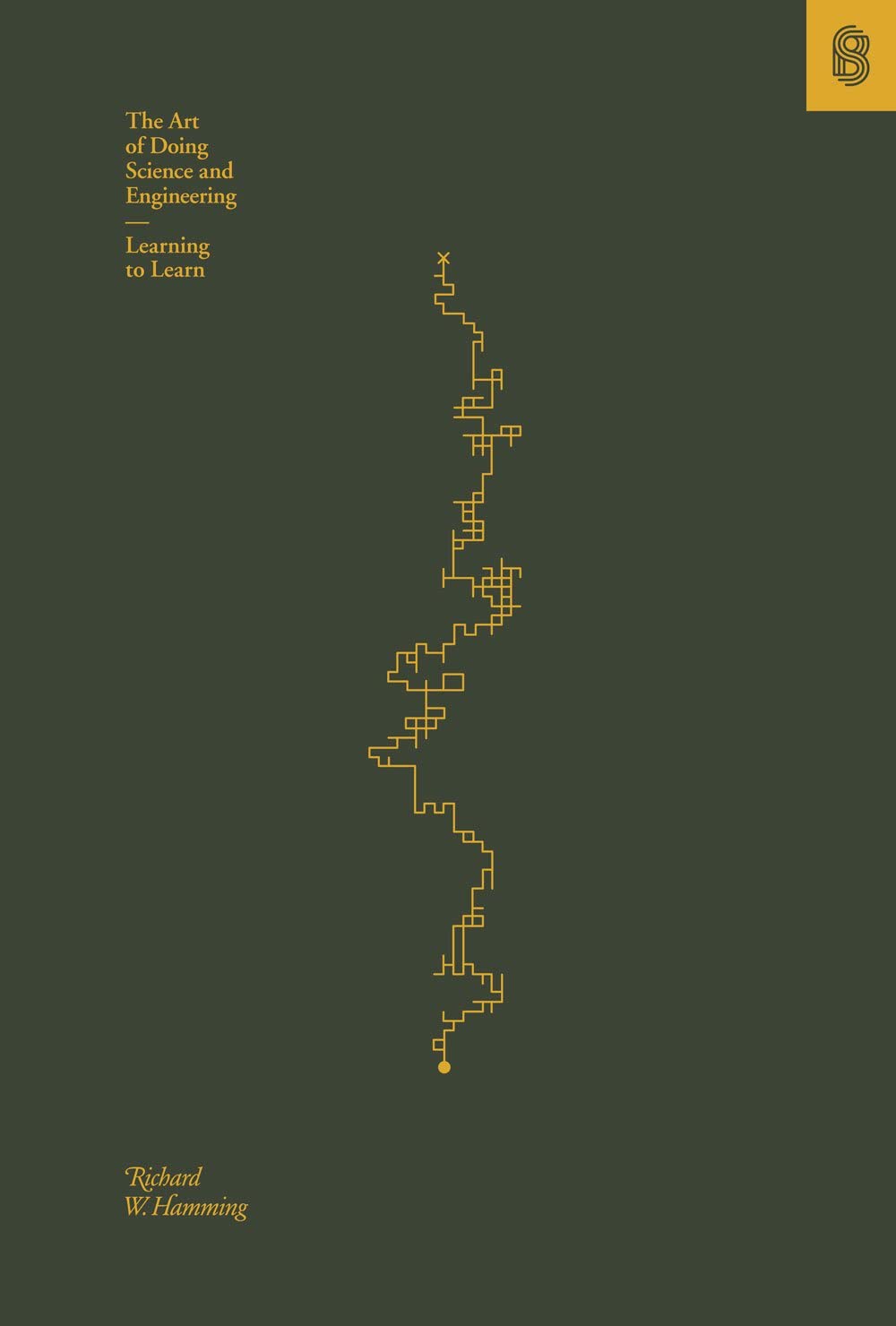




Price: $23.00 - $19.84
(as of Jul 22, 2024 03:13:14 UTC – Details)

A groundbreaking treatise by one of the great mathematicians of our age, who outlines a style of thinking by which great ideas are conceived.
What inspires and spurs on a great idea? Can we train ourselves to think in a way that will enable world-changing understandings and insights to emerge?
Richard Hamming said we can. He first inspired a generation of engineers, scientists, and researchers in 1986 with “You and Your Research,” an electrifying sermon on why some scientists do great work, why most don’t, why he did, and why you can—and should—too. The Art of Doing Science and Engineering is the full expression of what “You and Your Research” outlined. It’s a book about thinking; more specifically, a style of thinking by which great ideas are conceived.
The book is filled with stories of great people performing mighty deeds—but they are not meant simply to be admired. Instead, they are to be aspired to, learned from, and surpassed. Hamming consistently returns to Shannon’s information theory, Einstein’s theory of relativity, Grace Hopper’s work on high-level programming, Kaiser’s work on digital filters, and his own work on error-correcting codes. He also recounts a number of his spectacular failures as clear examples of what to avoid.
Originally published in 1996 and adapted from a course that Hamming taught at the US Naval Postgraduate School, this edition includes an all-new foreword by designer, engineer, and founder of Dynamicland Bret Victor, plus more than 70 redrawn graphs and charts.
The Art of Doing Science and Engineering is a reminder that a capacity for learning and creativity are accessible to everyone. Hamming was as much a teacher as a scientist, and having spent a lifetime forming and confirming a theory of great people and great ideas, he prepares the next generation for even greater distinction.
From the Publisher




From the all-new foreword by Bret Victor
The Art of Doing Science and Engineering is the full, beautiful expression of what “You and Your Research” sketched in outline. In this delightfully earnest parody of a textbook, chapters on “Digital Filters” and “Error-Correcting Codes” do not, in fact, teach those things at all, but rather exist to teach the style of thinking by which these great ideas were conceived.
This is a book about thinking. One cannot talk about thinking in the abstract, at least not usefully. But one can talk about thinking about digital filters, and by studying how great scientists thought about digital filters, one learns, however gradually, to think like a great scientist.
A new edition, including over 70 redrawn graphs and charts






Hamming demands that you do extraordinary work
“Hamming is here to tell you about excellence. His lessons unfold through personal stories of discovery and failure—life as an extraordinary scientist. But Hamming demands that you do extraordinary work, too, and for that he offers the best advice I know.”
––Andy Matuschak, software engineer, designer, and researcher
One of the major US intellects
“Your last chance to read the words of thinking of one of the major intellects that the USA has produced.”
––Eugene N. Miya, NASA researcher
Preparing the next generation for even greater greatness
“Hamming was always as much a teacher as a scientist, and having spent a lifetime forming and confirming a theory of great people, he felt he could prepare the next generation for even greater greatness. That’s the premise and promise of this book.”
––Bret Victor, founder of Dynamicland, designer, and engineer


About the author
Richard W. Hamming was a scientist and mathematician whose work inspired a generation of engineers, scientists, and researchers. He is best known for discovering mathematical formulas that allow computers to correct their own errors, a fundamental function of modems, compact disks, and satellite communications.
Born in Chicago in 1915, he provided crucial programming support as a member of the Manhattan Project. After World War II, he joined Bell Labs, where over the next 15 years he was involved in nearly all of its most prominent achievements. He later taught and lectured at the Naval Postgraduate School in Monterey, California. Throughout his career, Hamming received many awards for his work, including the Turing Award in 1968, the highest honor in computer science. In 1988, the Institute of Electrical and Electronics Engineers created the Richard W. Hamming Medal in his honor, of which he was the first recipient. He died in 1998.


About the publisher
Stripe Press publishes books about economic and technological advancement. Stripe partners with hundreds of thousands of the world’s most innovative businesses—organizations that will shape the world of tomorrow. These businesses are the result of many different inputs. Perhaps the most important ingredient is “ideas.” Stripe Press highlights ideas that we think can be broadly useful. Some books contain entirely new material, some are collections of existing work reimagined, and others are republications of previous works that have remained relevant over time or have renewed relevance today.
Other titles by Stripe Press:
High Growth Handbook by Elad GilThe Dream Machine by M. Mitchell WaldropStubborn Attachments by Tyler CowenThe Revolt of the Public by Martin GurriAn Elegant Puzzle by Will LarsonGet Together by Bailey Richardson, Kevin Huynh, and Kai Elmer SottoThe Making of Prince of Persia by Jordan Mechner
Publisher : Stripe Press (May 26, 2020)
Language : English
Hardcover : 432 pages
ISBN-10 : 1732265178
ISBN-13 : 978-1732265172
Item Weight : 2.31 pounds
Dimensions : 6.25 x 1.25 x 9.25 inches





